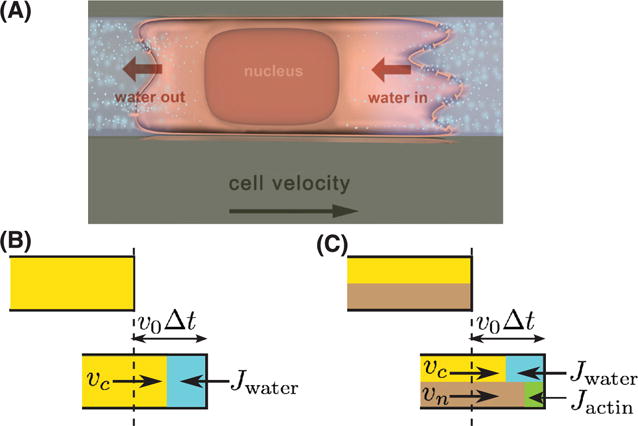Figure 5.

Directional water flux, like actin polymerization flux, can drive cell movement. (A) Cells in confined environments can generate water influx at the leading edge and water efflux at the trailing edge. The water flux is connect with directional ionic flows. (B) Fluid flux gives a quantitative kinematic condition for the cell boundary: equation (10). Here vc is the fluid velocity in the cytoplasm and v0 is the velocity of the cell leading edge. In time Δt, the new volume element is v0Δt which is equal to the sum of vcΔt and JwaterΔt. (C) If the cytoplasm is considered as a 2-phase fluid, the fluid phase only occupies a fraction of the cell volume θc. In this case, the new volume is given by a combination of vc, actin velocity vn, and Jwater and Jactin (equation 11).
